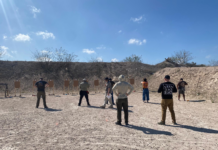
If you’ve been on the internet lately, you’ve heard about meditation. It’s an ancient practice that’s gained popularity over the last few years, thanks to a number of successful and influential people who use meditation as a tool.
Science seems to back up their claims that meditation can improve focus, creativity, and productivity (among other things). However, traditional meditation may not be your preferred method for achieving these results.
It might be difficult to find the time to sit down and meditate every day. Maybe it’s a little too touchy-feely for your taste. Just sitting still and breathing for extended periods of time feels unfair for most people.
Regardless of why standard meditation practice might not be for you, there is good news. You don’t have to sit down and breathe deeply with your eyes closed to enter a meditative state or get the benefits of meditation. There are other activities that can achieve the same results as regular meditation.
Here’s how it works:
The meditative state
There’s a ton of literature on meditation and how it works to reorganize your brain structure for the better.
However, the common thread that stands out is simply being present. The goal of meditation is to maintain focus on one thing for a longer than usual period of time. And that thing should be what is happening right now.
Many experts recommend that beginners focus on their breathing, because it’s always there, and it’s always happening. But you can focus and meditate on anything.
And that’s where outdoor activities come in. Outdoor activities give you a near endless list of things to focus on in exactly the same way. Shooting at the range is a great example, because you can only be consistently accurate by shutting out all distractions and focusing on the target, the trigger and your breathing.
Runners may focus on the beat of their footsteps or their breathing for hours as they run. If you’re skiing you can (and should) focus on the sensations from your ski boots. There are plenty of sights and sounds to sense in nature if you’re just out for a walk in the woods.
No matter what, there’s something you can concentrate on. The trick is to keep your attention directed there.
Staying focused
What makes meditation both effective and challenging is maintaining focus. No matter what, your brain is going to find things and get distracted. Finding new things to pay attention to is your brain’s evolutionary job, since that could keep you alive if a danger arises.
The key is to bring your attention back on target when you notice your mind has wandered from your chosen focus.
Be kind about this for yourself. Resist the tendency to get frustrated if you feel you get distracted too easily or if it’s tricky to notice when you lose your focus. Staying focused on one thing for a long time is difficult. But it’s worth it to get the benefits.
Not only is it good for your mind, it can make doing the things you love more enjoyable as you paying direct attention to what’s around you, rather than mentally staying in the office.
Set realistic expectations
Setting unrealistic expectations is probably where people experience the biggest disappointments in adopting meditation. If this happens to you, it’s not entirely your fault.
Many people talk about meditation in very grand terms. They present meditation as something incredibly life changing.
Well, meditation can change your life. And drinking tea instead of coffee can also change your life. However, your day-to-day experience probably won’t change much by switching to tea, or begin meditating.
“Change your life” is a deceiving term. It sounds very big. It sounds like it should make the difference between living on minimum wage and living like Bill Gates.
In reality, life changes usually come about very subtly. Occasionally, something comes along and really turns things upside down. But meditation isn’t one of those things. The positive changes typically come slowly and incrementally.
It may take weeks or months of consistent meditation to get meaningful results. When you do start to experience them, they may not be obvious. Coming up with ideas for projects more easily or being able to focus on a single task for longer aren’t the sort of changes that will blow your mind.
So it’s key to set realistic expectations. Understand that you’re doing something that will slowly improve your mind over time, and that the benefits are cumulative.
That extra five minutes of focus or finishing projects a little faster will grow into a noticeable effect. Be patient—in fact, becoming more patient with the world is another benefit of meditation.
The good news is that it’s a pleasure to integrate meditation into outdoors activities that you enjoy. Getting outside with some intentional focus will help you more reliably build up those subtle, cumulative benefits. You’ll find yourself more refreshed by your time outside. As it comes, you’ll realize that you’re experiencing rewarding changes without even noticing the effort.
.
.

—Jay Chambers is a Texas archer, shooter, survivalist and business owner at Minuteman Review. He believes in free speech, resiliency and self-sufficiency in an increasingly unpredictable world.
All DRGO articles by Jay Chambers



